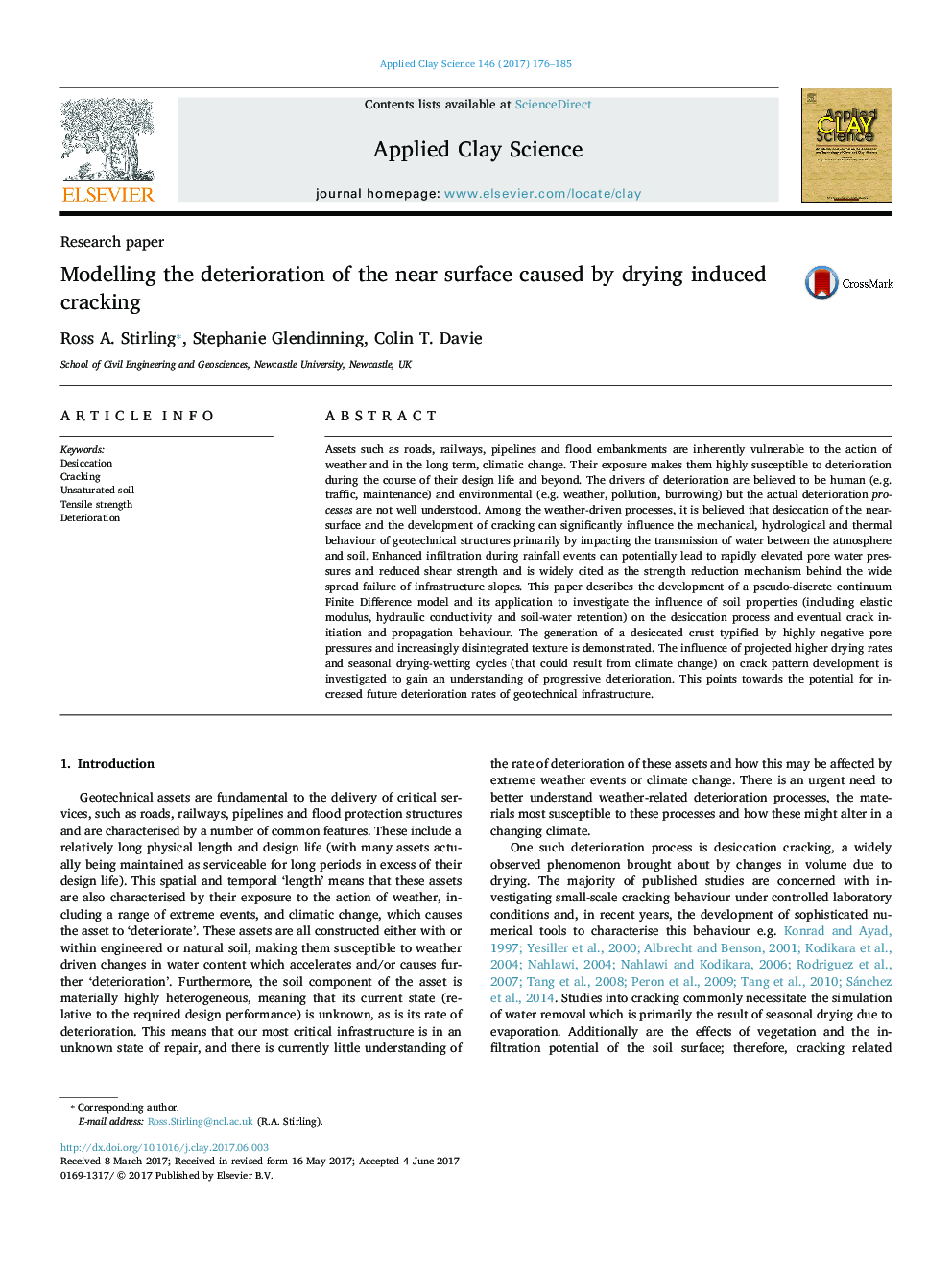| Article ID | Journal | Published Year | Pages | File Type |
|---|---|---|---|---|
| 5468841 | Applied Clay Science | 2017 | 10 Pages |
Abstract
Assets such as roads, railways, pipelines and flood embankments are inherently vulnerable to the action of weather and in the long term, climatic change. Their exposure makes them highly susceptible to deterioration during the course of their design life and beyond. The drivers of deterioration are believed to be human (e.g. traffic, maintenance) and environmental (e.g. weather, pollution, burrowing) but the actual deterioration processes are not well understood. Among the weather-driven processes, it is believed that desiccation of the near-surface and the development of cracking can significantly influence the mechanical, hydrological and thermal behaviour of geotechnical structures primarily by impacting the transmission of water between the atmosphere and soil. Enhanced infiltration during rainfall events can potentially lead to rapidly elevated pore water pressures and reduced shear strength and is widely cited as the strength reduction mechanism behind the wide spread failure of infrastructure slopes. This paper describes the development of a pseudo-discrete continuum Finite Difference model and its application to investigate the influence of soil properties (including elastic modulus, hydraulic conductivity and soil-water retention) on the desiccation process and eventual crack initiation and propagation behaviour. The generation of a desiccated crust typified by highly negative pore pressures and increasingly disintegrated texture is demonstrated. The influence of projected higher drying rates and seasonal drying-wetting cycles (that could result from climate change) on crack pattern development is investigated to gain an understanding of progressive deterioration. This points towards the potential for increased future deterioration rates of geotechnical infrastructure.
Related Topics
Physical Sciences and Engineering
Earth and Planetary Sciences
Geochemistry and Petrology
Authors
Ross A. Stirling, Stephanie Glendinning, Colin T. Davie,
